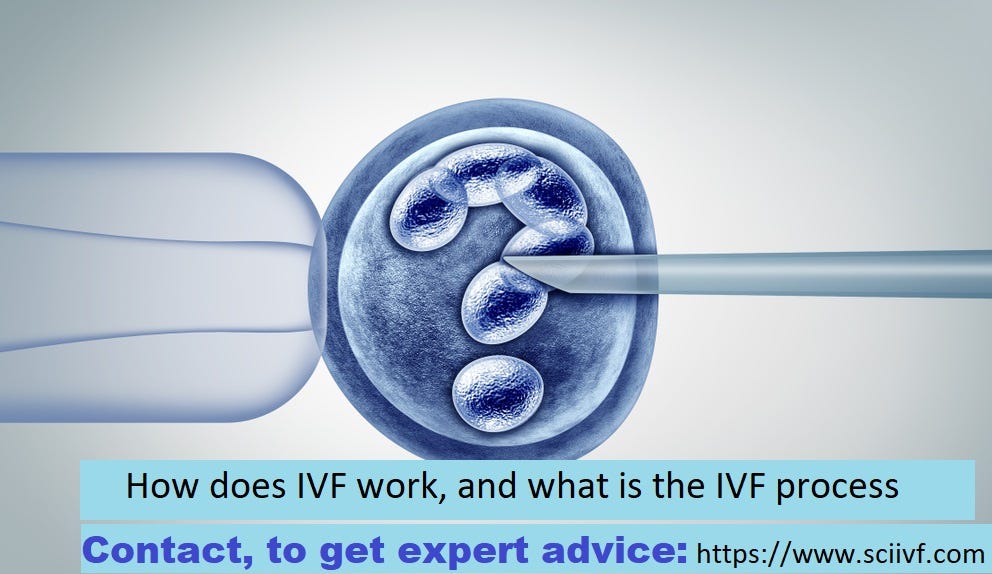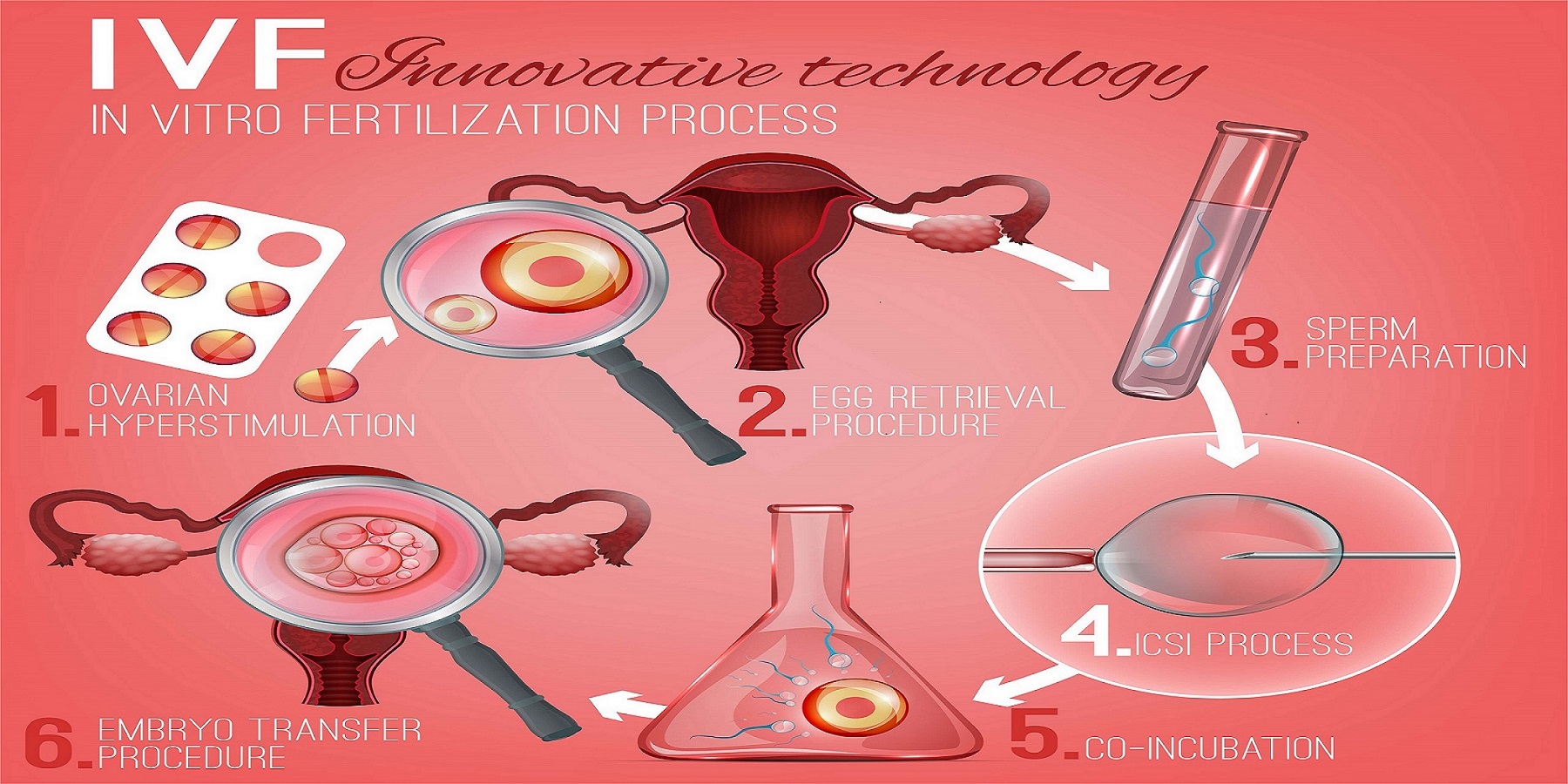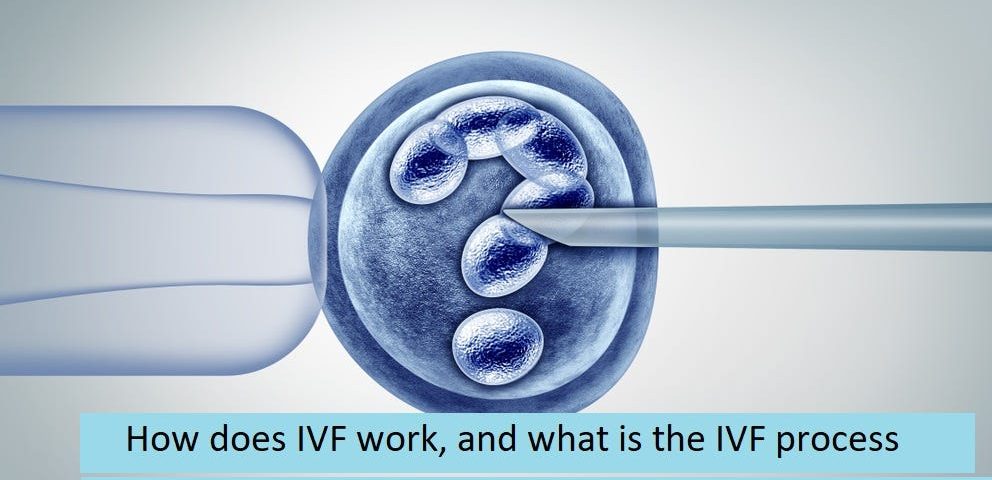
Welcome to Gold Coast IVF: Your Path to Parenthood Starts Here
April 10, 2025How Does IVF Work? A Deep Dive into the Fascinating World of In Vitro Fertilization
Have you ever wondered how a tiny spark of life can begin outside the human body? Or how science can step in when nature needs a little nudge? In vitro fertilization, or IVF, is like a superhero in the world of baby-making—it’s a process that’s helped millions of people become parents, even when the odds seemed stacked against them. But how does it actually work? Let’s peel back the curtain and explore this incredible journey, step by step, with some surprising twists, fun facts, and practical tips you won’t find just anywhere.
IVF isn’t just about test tubes and lab coats (though those play a big role!). It’s a story of hope, science, and a bit of magic—mixed with real-life challenges and emotions. Whether you’re curious about the process, thinking about trying it yourself, or just love a good behind-the-scenes scoop, this guide has you covered. We’ll dive into the nitty-gritty details, sprinkle in some lesser-known secrets, and share the latest research to give you a fresh, full picture. Ready? Let’s get started!
What Is IVF, Anyway?
IVF stands for in vitro fertilization, which is Latin for “in glass.” Cool, right? It means eggs and sperm meet up in a lab dish—not inside a body—to create an embryo. That embryo is then placed into a uterus, where it hopefully grows into a baby. It’s like giving nature a high-tech helping hand!
Why Do People Choose IVF?
People turn to IVF for all kinds of reasons. Maybe the fallopian tubes (those little highways for eggs) are blocked, or sperm isn’t swimming strong. Sometimes it’s unexplained infertility—like a mystery even doctors can’t crack—or age is making things tricky. It’s also a go-to for same-sex couples or single folks using donor eggs, sperm, or surrogates. Basically, IVF opens doors when other paths are closed.
A Fun Fact to Wow Your Friends
Did you know the first IVF baby, Louise Brown, was born in 1978? Her nickname was the “test-tube baby,” even though no test tubes were involved—just a flat dish! Since then, over 8 million babies have come into the world thanks to IVF. That’s a lot of birthday candles!
Step 1: Boosting the Ovaries—Eggs on Demand
The IVF journey starts with a big goal: getting more eggs than the body usually makes in a month. Normally, ovaries release one egg per cycle, but IVF says, “Let’s ramp it up!”
How It Works
Doctors use special medicines—hormone shots—to wake up the ovaries. These shots, often given in the belly, tell the ovaries to grow lots of eggs at once. Think of it like turning a single flower bud into a whole bouquet!
- What’s in the Shots? Hormones like FSH (follicle-stimulating hormone) and LH (luteinizing hormone) are the stars. They’re like cheerleaders for your ovaries.
- How Long? About 8-14 days, with checkups to see how those eggs are growing.
The Secret Sauce: Monitoring
While the ovaries are busy, doctors keep a close eye with ultrasounds (like an inside peek at your belly) and blood tests. They’re checking hormone levels and counting egg sacs (follicles). Too many eggs? Risky. Too few? Not enough to work with. It’s a balancing act!
Real-Life Tip
✔️ Stay Organized: You’ll have lots of appointments—keep a calendar handy!
❌ Don’t Skip Doses: Missing a shot can throw off the whole plan.
Step 2: Egg Retrieval—Grabbing the Goods
Once the eggs are ready (usually when they’re about 18-20 millimeters big), it’s time to collect them. This part sounds wild, but it’s quick and pretty routine.
The Process
You’ll get light sedation—think twilight sleep, not fully knocked out—so you’re comfy. A doctor uses a thin needle guided by ultrasound to gently pull the eggs out of the ovaries through the vagina. No cuts, no stitches!
- How Many Eggs? Anywhere from 5 to 20, depending on your body and age.
- How Long? About 20-30 minutes.
A Hidden Gem: What Happens to the Eggs?
The eggs go straight to a lab, where they’re tucked into a cozy dish with a special liquid that mimics the body’s natural environment. Fun fact: embryologists sometimes play music in the lab—some swear classical tunes help embryos thrive!
Practical Advice
✔️ Rest Up: Take it easy after—your ovaries might feel full or sore.
❌ Don’t Panic: A little bloating or cramping is normal, but call your doc if it’s intense.
Step 3: Sperm Meets Egg—The Lab Love Story
Now comes the romantic part: uniting egg and sperm. But this isn’t a candlelit dinner—it’s a high-tech hookup!
Two Ways It Happens
- Classic IVF: Sperm and eggs are mixed in a dish, and nature takes over. The strongest swimmers fertilize the eggs.
- ICSI (Intracytoplasmic Sperm Injection): If sperm needs a boost (low count or slow movers), a scientist picks one and injects it right into an egg with a tiny needle. Precision at its finest!
The Waiting Game
After 12-24 hours, the team checks if fertilization worked. A fertilized egg becomes a zygote—a single cell with big dreams. Over the next few days, it splits into more cells, turning into an embryo.
Did You Know?
Some clinics use time-lapse cameras to watch embryos grow without disturbing them. It’s like a baby reality show—minus the drama!
Step 4: Growing Embryos—From Cells to Hope
The fertilized eggs don’t go straight to the uterus. They need a few days to grow in the lab, and this stage is where science gets really cool.
What’s Happening?
Embryos are kept in incubators—think of them as fancy baby cribs with perfect temperature and nutrients. Over 3-6 days, they grow from a few cells to a blastocyst (about 100 cells), which is prime for planting.
- Day 3: Embryos have 6-8 cells—still early babies.
- Day 5 or 6: Blastocyst stage—ready for action!
A Peek Behind the Scenes
Embryologists grade embryos based on looks—like a beauty pageant for cells. They check shape, size, and how even the cells are. Some even test the DNA (called PGT) to spot genetic issues, especially if there’s a family history.
Latest Research Alert
A 2023 study from the American Society for Reproductive Medicine found that growing embryos to the blastocyst stage (Day 5) ups the success rate by 10-15% compared to Day 3 transfers. More time in the lab can mean a stronger start!
Step 5: Embryo Transfer—Home Sweet Uterus
This is the big moment: putting the embryo where it belongs. It’s simpler than you’d think—no surgery, just a quick visit.
How It Goes Down
A doctor uses a soft catheter (a tiny tube) to slide the embryo into the uterus through the cervix. You’re awake, and it feels like a Pap smear—mild cramps, maybe, but no big deal.
- How Many Embryos? Usually 1-2, to avoid twins or triplets (which can be riskier).
- Fresh or Frozen? Some use fresh embryos right away; others freeze them for later (more on that soon!).
A Little-Known Twist
Ever heard of the “mock transfer”? Before the real deal, some clinics practice with an empty catheter to map the uterus. It’s like a dress rehearsal for the main event!
Pro Tip
✔️ Relax: Stress doesn’t ruin it, but a calm vibe can’t hurt. Try a warm bath after.
❌ Don’t Overdo It: No heavy lifting, but you don’t need to lie flat for days either.

Step 6: The Two-Week Wait—Nerves and Hope
After the transfer, you wait about 9-14 days to see if the embryo sticks. This “two-week wait” (TWW) is famous for driving people up the wall!
What’s Happening Inside?
The embryo burrows into the uterine lining—a process called implantation. If it works, it starts making hCG, the pregnancy hormone. A blood test at the end of the TWW checks for it.
Fun Distraction Idea
Fans love hearing this: some clinics suggest watching funny movies during the TWW. Laughter might not make a baby, but it beats obsessing over every twinge!
Expert Insight
Dr. Jane Frederick, a fertility specialist, says, “The two-week wait is tough, but it’s not about perfection—it’s about giving your body a chance to do its thing.”

Fresh vs. Frozen: What’s the Deal?
Here’s a hot topic: should you use fresh embryos right after egg retrieval or freeze them for later? Let’s break it down.
Fresh Embryo Transfer
- Pros: Faster—straight from lab to uterus in one cycle.
- Cons: Your body’s still recovering from hormone shots, which can mess with implantation.
Frozen Embryo Transfer (FET)
- Pros: Gives your body a break, and frozen embryos can be just as strong (sometimes stronger!).
- Cons: Extra wait time and a separate cycle.
The Numbers Don’t Lie
A 2024 study in Fertility and Sterility showed FET success rates hitting 60% for women under 35, compared to 55% for fresh transfers. Freezing tech has gotten that good!
Which Should You Pick?
✔️ Ask Your Doc: It depends on your health, egg haul, and goals.
❌ Don’t Assume: Fresh isn’t always best—frozen’s stealing the spotlight these days.
What Makes IVF Success Tick?
IVF isn’t a sure thing (sorry, no magic wands here!). Success depends on a bunch of factors—some you can tweak, some you can’t.
Big Players
- Age: Under 35? Up to 50% chance per cycle. Over 40? Closer to 10-15%.
- Egg Quality: Fresh, young eggs (yours or a donor’s) win the race.
- Sperm Strength: Healthy swimmers matter—ICSI helps if they’re sluggish.
- Uterus Vibes: A cozy lining is key for implantation.
Boost Your Odds
✔️ Eat Smart: Load up on antioxidants—berries, nuts, and leafy greens rock.
✔️ Sleep Well: Aim for 7-8 hours; it balances hormones.
❌ Cut Stress: Easier said than done, but yoga or a good book can help.
A Stat to Chew On
The CDC says about 2% of all U.S. babies born each year are IVF babies—that’s over 80,000 little miracles annually!
The Emotional Rollercoaster: What No One Tells You
IVF isn’t just physical—it’s a wild ride for your heart and mind. Let’s spill some tea on the stuff people don’t always talk about.
The Highs
- Seeing your embryo on a screen? Pure awe.
- That positive test? Tears-of-joy territory.
The Lows
- Negative results sting—hard.
- Hormones can turn you into a weepy, grumpy mess (hello, mood swings!).
Coping Hacks
✔️ Find Your Crew: Online forums or local support groups are gold.
✔️ Journal It: Scribble your fears—getting them out helps.
❌ Don’t Bottle It: Talk to your partner or a pal—silence makes it worse.
Expert Wisdom
Dr. Alice Domar, a fertility psychologist, notes, “IVF patients often feel alone, but connecting with others who get it can lighten the load.”
Costs and Coverage: The Money Talk
IVF isn’t cheap, and that’s a big worry for fans wanting the real scoop. Let’s break it down.
How Much?
- One cycle: $12,000-$20,000 (plus meds, which can add $3,000-$5,000).
- Extras like ICSI or genetic testing? Tack on a few grand.
Insurance Scoop
Only 19 U.S. states mandate some IVF coverage—check your state! Elsewhere, it’s out-of-pocket or begging your boss’s plan to chip in.
Money-Saving Tricks
✔️ Mini IVF: Fewer drugs, lower cost—ask if it fits you.
✔️ Grants: Groups like Baby Quest offer cash for cycles.
❌ Don’t Skimp: Cheaper clinics might cut corners—research matters.
Risks and Rewards: What’s at Stake?
IVF’s a game-changer, but it’s not risk-free. Here’s the lowdown.
Risks
- OHSS (Ovarian Hyperstimulation Syndrome): Ovaries overreact to meds—rare but serious (1-5% of cases).
- Multiples: Twins or more up the odds of preterm birth.
- Emotional Toll: Stress and disappointment can hit hard.
Rewards
- A baby when all else fails? Priceless.
- Leftover embryos? Future siblings without starting over.
Expert Take
Dr. Mark Surrey, a reproductive surgeon, says, “IVF’s risks are real, but for most, the chance to hold their child outweighs them.”
The Future of IVF: What’s Next?
IVF’s always evolving—here’s what’s cooking in 2025.
Cool Trends
- AI Boost: Algorithms now pick the best embryos with 90% accuracy, per a 2024 study.
- Gene Editing: CRISPR’s on the horizon to fix genetic glitches (still experimental!).
- At-Home Kits: Early tests for hormone levels—less clinic time!
A Wild Prediction
Some scientists think we’ll grow embryos entirely in artificial wombs by 2030. Sci-fi? Maybe not!
Your IVF Questions, Answered
Fans love Q&A—so here’s a mini one based on what people wonder most.
“Does It Hurt?”
Egg retrieval’s the ouchiest part, but sedation keeps it chill. Transfer? Barely a pinch.
“How Long Does It Take?”
One cycle’s 4-6 weeks, start to finish. Add more if you freeze or need breaks.
“Can I Exercise?”
Light stuff like walking’s fine—skip the marathons during stims and TWW.

Let’s Get Interactive!
IVF’s a big topic—what’s your burning question? Drop it in the comments below! Or try this:
- Poll: Would you pick fresh or frozen embryos? Vote and tell us why!
- Challenge: Share your fave stress-busting trick for the TWW—we’ll feature the best ones next time!
Thanks for joining this deep dive into how IVF works. It’s a mix of science, heart, and a little luck—and now you’ve got the full scoop. Whether it’s for you or just fun trivia, you’re in the know!
